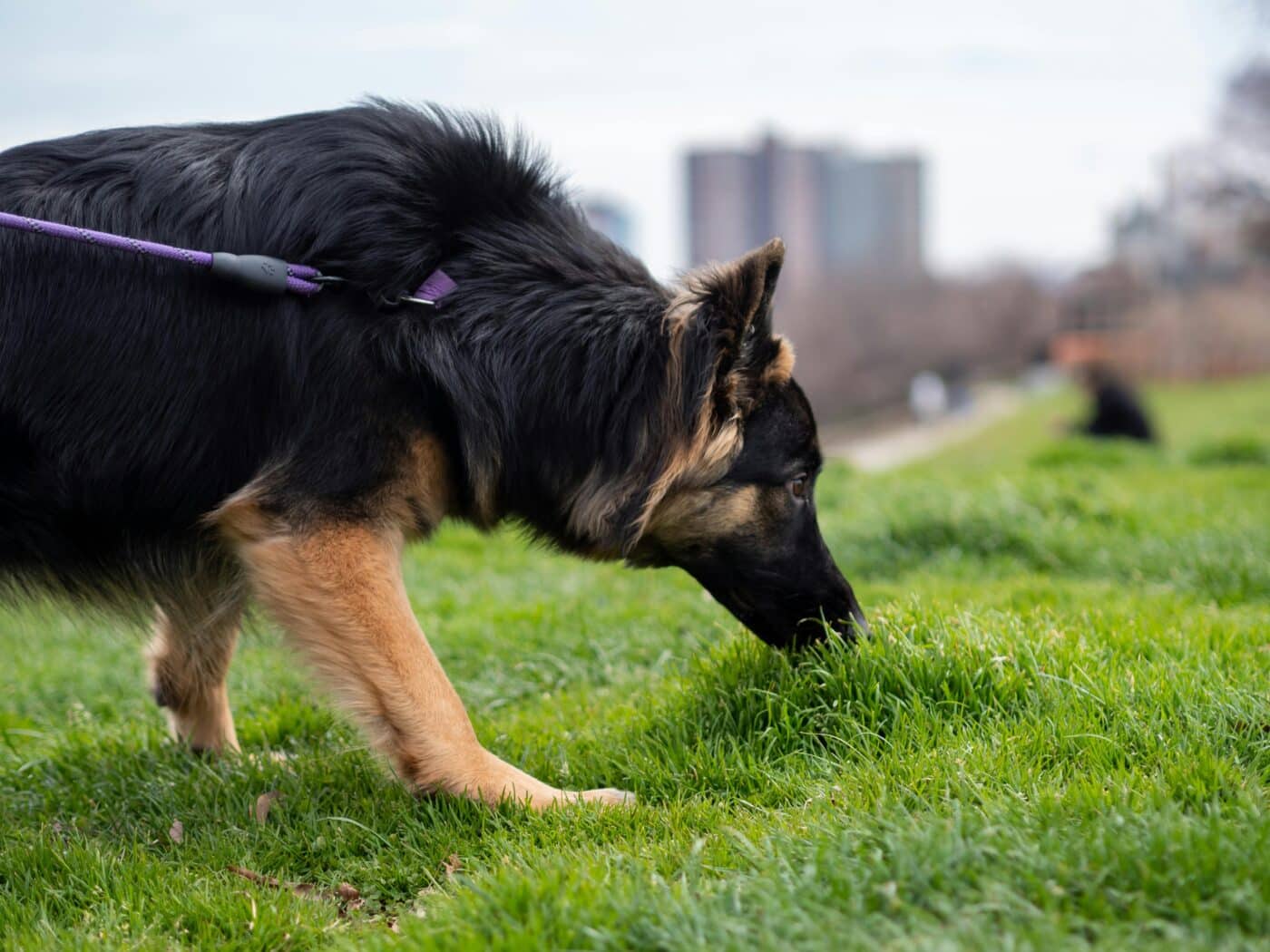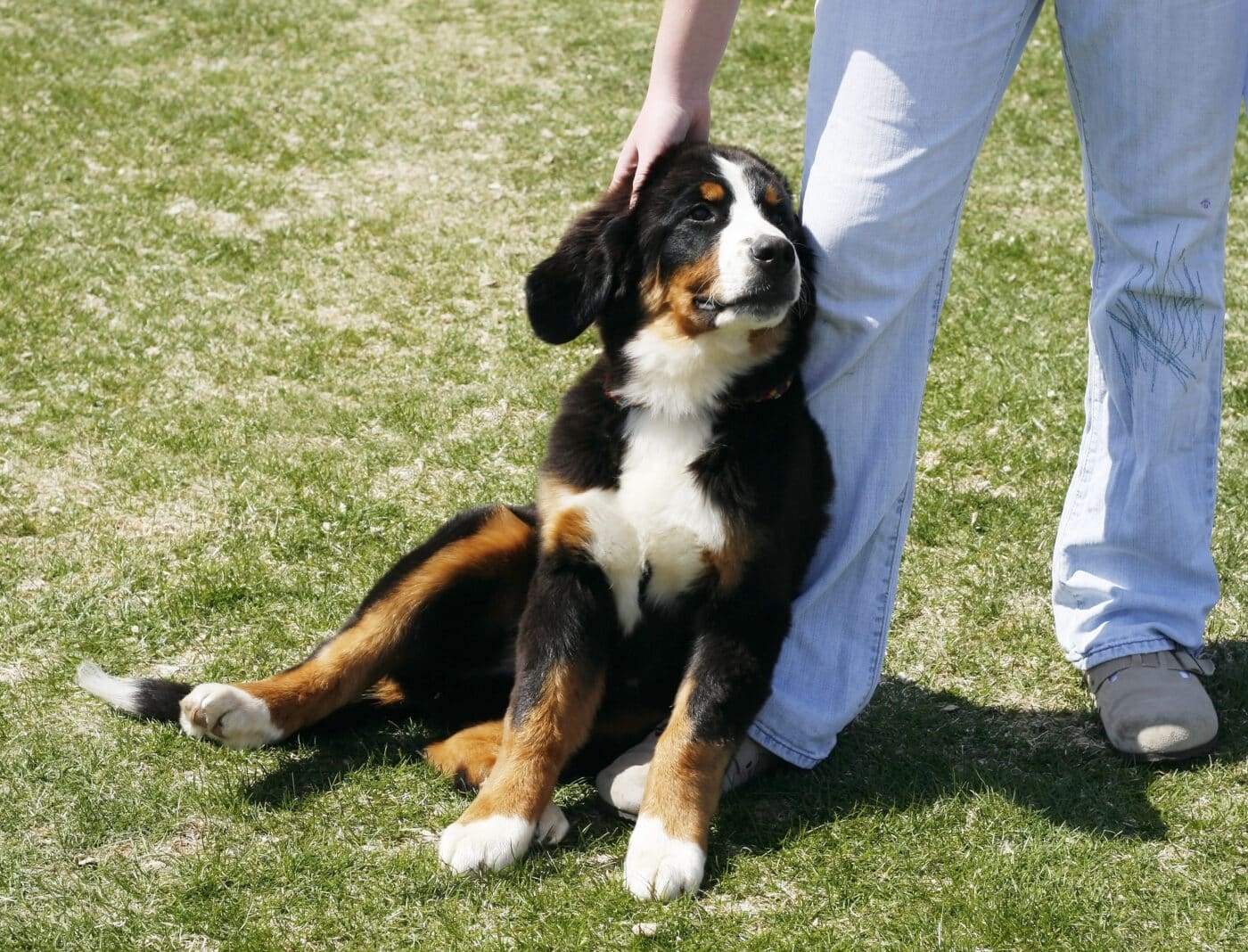

Dogs are incredibly expressive animals, using body language, vocalizations, and behaviors to communicate their needs and feelings. However, as dog owners, we often misinterpret these signals. What might seem cute, funny, or even concerning may not mean what we think. Misunderstanding these behaviors can lead to confusion and challenges in training or managing your dog’s behavior. Sometimes, it can cause unnecessary stress for the dog and the owner. To foster a better bond and ensure your dog’s well-being, it’s important to understand what these common dog behaviors mean.
Wagging Tail Doesn’t Always Mean Happy

We often associate a wagging tail with a happy dog, but that’s not always true. While a loose, low wag usually signals contentment or excitement, a stiff, high wag can indicate agitation, dominance, or even aggression. The wag’s speed, position, and direction provide important clues about a dog’s emotional state. A dog wagging their tail to the left might be experiencing stress or anxiety, whereas a right-side wag could indicate relaxation. Considering the whole body language before assuming a wagging tail means a happy dog is essential.
Belly Exposure Isn’t Always an Invitation for Rubs

Many dog owners assume that when a dog rolls onto its back and shows its belly, it’s asking for a belly rub. While this is sometimes true, it’s not always the case. Dogs also expose their bellies as a sign of submission or fear, signaling they aren’t a threat. If the dog’s body is tense or avoids eye contact, it’s best not to assume they’re seeking affection. Instead, they might try to de-escalate a situation or show submission to a more dominant figure—whether that’s another dog or you.
Growling Isn’t Always Aggressive

Growling is often seen as an aggressive behavior, but it’s not necessarily a sign that a dog is about to attack. Growling is a dog’s way of communicating discomfort, fear, or stress, and it serves as a warning signal to back off or stop doing something. Ignoring a growl could escalate behavior, as the dog feels their communication has been disregarded. Rather than viewing growling as purely negative, it’s important to recognize it as a form of expression that needs to be respected and addressed.
Licking Isn’t Just for Showing Affection

While many see licking as a sign of affection, it’s a more complex behavior with multiple meanings. Dogs may lick you as a greeting, a way to get your attention, or because they enjoy the salty taste of your skin. Licking can signify submission or a way for a dog to soothe themselves when anxious. Additionally, dogs sometimes lick as a compulsive behavior, which could indicate boredom or stress. So, while licking often signals affection, it’s important to consider the context to understand what your dog is trying to communicate.
Head Tilting Is About More Than Just Cuteness

When a dog tilts its head, it’s hard not to melt from the sheer cuteness of the gesture. But there’s more to it than just a display of charm. Dogs tilt their heads to better focus on sounds and gather more information about their surroundings. This behavior helps them determine the source of a sound and might be their way of trying to understand your words. Head tilting could also be linked to empathy, as dogs try to gauge your emotions through your tone of voice.
Sniffing Everything Is a Dog’s Way of Gathering Data

For dogs, sniffing isn’t just about curiosity; it’s their primary way of gathering information. A dog’s sense of smell is tens of thousands of times more powerful than a human’s, allowing them to “read” their environment through scent. When your dog stops to sniff every bush or tree, they pick up a wealth of information—such as who’s been there, whether another animal is nearby, or even if something is amiss in their environment. Understanding your dog’s sniffing habit as a natural and important behavior can prevent unnecessary frustration during walks.
Chewing Isn’t Just About Destruction

When dogs chew on furniture, shoes, or other household items, labeling them as destructive is easy. However, chewing is a natural behavior that helps dogs relieve stress, boredom, and anxiety. Puppies also chew to alleviate discomfort from teething. For adult dogs, chewing can be a way to exercise their jaws, clean their teeth, or release pent-up energy. If your dog cheats on inappropriate objects, it may be a sign that they need more mental stimulation or access to suitable chew toys.
Circling Before Lying Down Has an Instinctive Origin

Many dogs spin or circle before lying down, and while it might look like a silly quirk, it’s actually an instinctive behavior. In the wild, dogs and their ancestors circle to flatten grass, leaves, or snow to create a comfortable, safe resting spot. This behavior also allowed them to check their surroundings for potential threats before settling down. Even though domesticated dogs no longer need to prepare their bedding similarly, the instinct to circle remains.
Jumping Up Isn’t Always About Misbehavior

When a dog jumps up on people, it’s usually seen as a behavior that needs correcting. However, jumping up is a dog’s way of greeting you, often out of excitement. In the wild, puppies would jump up to lick their mother’s face to greet or show submission. While it can be annoying or problematic, especially with larger dogs, jumping is not inherently bad behavior—it’s a natural canine greeting that can be managed with training and consistency.
Tail Between the Legs Isn’t Just About Fear

A dog tucking its tail between its legs is often seen as a sign of fear, and while that’s sometimes the case, the behavior can also have other meanings. Dogs may tuck their tails to signal submission or protect themselves when unsure or feeling vulnerable. It’s a way to shield their sensitive underbelly from potential threats. If you notice this behavior in your dog, pay attention to the surrounding environment and body language to better understand what’s causing their reaction.
Sleeping on Their Back Is a Sign of Trust

When dogs sleep on their backs with their belly exposed, they’re showing that they feel safe and secure in their environment. This position leaves them vulnerable, so a dog sleeping this way signals that they don’t feel threatened. If your dog likes to sleep in this relaxed position, it compliments how comfortable they feel in your home. It’s not just about finding a comfy spot but showing complete trust in their surroundings.
Eating Grass Doesn’t Always Mean a Dog Is Sick

It’s a common misconception that dogs eat grass only when they’re feeling unwell or need to induce vomiting. While some dogs eat grass with an upset stomach, many simply enjoy the taste or texture of grass. Eating grass is a natural behavior for dogs, and in small amounts, it’s generally harmless. Some experts believe dogs eat grass for its fiber content or to fulfill a nutritional need. Unless your dog eats large amounts or shows signs of illness, grass-eating is usually nothing to worry about.
Barking Doesn’t Always Mean Aggression

Barking is a natural way for dogs to communicate, but not all barks are created equal. Dogs bark for various reasons—sometimes out of excitement, other times to alert you to something, and yes, sometimes out of fear or aggression. Learning to differentiate between different types of barking can help you better understand what your dog is trying to communicate. For example, a high-pitched, repetitive bark usually indicates excitement, while a lower, slower bark might be a warning or a sign of discomfort.
Leaning Against You Is a Sign of Affection and Trust

When a dog leans against you, many people assume it’s a way for the dog to assert dominance or ask for attention. While attention-seeking might be part of it, leaning is often a dog’s way of showing affection and trust. Dogs lean against their humans when they feel safe and want to be close, like huddling with their pack members in the wild. It’s a sign of deep connection and security, so when your dog leans into you, they say they trust and love you.
Yawning Doesn’t Always Mean Tiredness

Yawning in dogs is often misunderstood as a sign that they’re tired but can also indicate stress, anxiety, or discomfort. Dogs yawn to calm themselves in stressful situations, such as meeting new people, visiting the vet, or encountering unfamiliar environments. It’s a form of appeasement behavior that dogs use to signal they’re not a threat. If your dog yawns frequently in certain contexts, it may be their way of trying to calm themselves or communicate that they’re feeling anxious.
The Misunderstood Doggy Dictionary

At the end of the day, dogs have their language, and it’s up to us as owners to understand what they’re trying to say. While some behaviors might seem odd, frustrating, or even concerning, many have deep roots in canine instincts and communication methods. By learning to read these signals more accurately, you can improve your relationship with your dog and ensure their needs are being met. So the next time your dog yawns leans against you or tilts their head, remember—they’re saying something, and it’s worth paying attention to!
The post 15 Dog Behaviors You’re Probably Misunderstanding appeared first on iHeartDogs.com.
